GOUT: Physiotherapy Treatment
Table of Contents
GOUT ARTHRITIS
Gout is a painful form of inflammatory arthritis that usually affects the big toe but can develop in any joint, including one or both of the knees. It forms when your body has high levels of uric acid. This acid forms sharp crystals that cause sudden bouts of pain, swelling, and tenderness.
KNEE ANATOMY
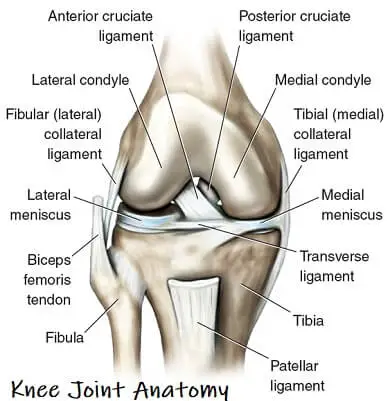
Knee joint is a hinge joint that is formed by the meeting of the thigh bone (femur) and the larger bone (tibia) of the lower leg. The knee is the largest joint in the body and has to sustain the greatest stresses since it supports the entire weight of the body above it.
Consequently, the rounded ends, or condyles, of the femur and tibia that meet at the knee are massive. The rounded ends of the tibia move forward and backward on the corresponding ends of the femur; the kneecap, or patella, rests upon the ends of the femur and serves to prevent the tibia from moving too far forward when the leg is bent.
The articulating (meeting) surfaces of the femur and tibia condyles are very smooth and are separated by a slight gap. The femur and the tibia are held together at the joint by a complex system of ligaments that run from the condyles of one bone to the condyles of the other.
The two bones’ possible contact with each other is cushioned by a synovial membrane and by layers of cartilage on the surface of each condyle. The entire knee joint, including the kneecap, is enveloped in a capsular apparatus that is large enough to allow for the movement of the tibia and also allows the kneecap to swing up and down freely on the front surface of the femur.
The quadriceps muscle of the thigh causes knee extension (straightening of the leg), while a number of other upper leg muscles cause the complementary motion, flexion, or bending, of the leg. Some rotation of the lower leg is also possible when the knee is bent, but the tightening of strong lateral ligaments at the joint prevents rotation when the leg is straight.
Although well-adapted for the downward transmission of the body’s weight, the structure of the knee itself offers little resistance to the lateral displacement of the femur and tibia condyles during motion, so the knee’s stability depends on the strength of the surrounding ligaments and muscles. Most common knee injuries, including bone dislocations and torn cartilage, reflect the susceptibility of the knee joint to the lateral displacement of its bones.
CAUSES
Gout occurs when urate crystals accumulate in your joint, causing the inflammation and intense pain of a gout attack. Urate crystals can form when you have high levels of uric acid in your blood. Your body produces uric acid when it breaks down purines — substances that are found naturally in your body. Purines are also found in certain foods, such as steak, organ meats, and seafood. Other foods also promote higher levels of uric acid, such as alcoholic beverages, especially beer, and drinks sweetened with fruit sugar (fructose).
Normally, uric acid dissolves in your blood and passes through your kidneys into your urine. But sometimes either your body produces too much uric acid or your kidneys excrete too little uric acid. When this happens, uric acid can build up, forming sharp, needlelike urate crystals in a joint or surrounding tissue that cause pain, inflammation, and swelling.
SIGN & SYMPTOMS
The main symptom of gout in the knee is pain and discomfort in the surrounding area. Keep in mind that gout is often unpredictable, regardless of the joint it’s affecting. You might go weeks or even months without any symptoms, only to wake up with a burning pain in your knee.
In some cases, gout starts out in one of your big toes before moving on to other areas, such as your knee. Over time, these flare-ups may last longer than previous episodes.
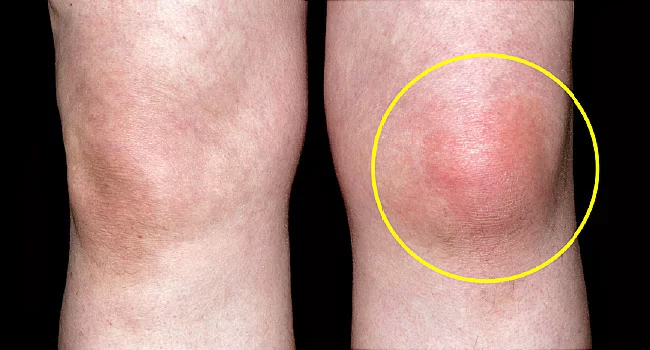
Other symptoms you might feel from gout in your knee include:
- tenderness
- swelling
- redness
- warmth (to the touch)
- stiffness and limited range of motion
DIAGNOSIS
This will include blood tests to determine the level of uric acid in the system and/or through joint fluid examination under a microscope. The latter test will be able to detect the presence of excessive uric acid crystals and is more reliable than blood tests. Kidney function tests may also be done to assess whether the organs are playing a role in your decreased uric acid excretion.
MEDICAL TREATMENT GOUT:
- Non-steroidal anti-inflammatory drugs (NSAIDs): NSAIDs are a common pain-relieving medication that can be found in most pharmacies and grocery stores. They are designed to reduce pain and swelling.
However, long-term use of these drugs may lead to liver damage and even increase the risk of heart attacks. NSAIDs can also purchased as a topical solution, which doesn’t pose as much risk as oral formats. NSAIDs such as ibuprofen or naproxen can work well if taken soon after gout symptoms develop.
2. Steroids: A highly effective therapy for reducing inflammation and pain, steroids can be either taken orally or via injection.
3. Colchicine: This medication is used to prevent or treat the symptoms of gout flare-ups. It works by decreasing the swelling and buildup of uric acid crystals that lead to pain. Colchicine is not a direct pain reliever but instead helps to prevent the causes of the pain.
PHYSIOTHERAPY TREATMENT
Physiotherapy treatment is pain relieving electrotherapy modalities eg. TENS, IFT (Interferential Therapy) , Use of Hot packs and Ice Packs.
Exercise in Gout:
1. Quadriceps Stretching exercise:
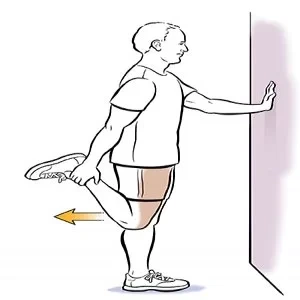
Stand tall and with your right hand grab your right ankle. Pull the ankle up towards your buttocks, and you should feel a pull in the front of your leg. Hold for at least 30 seconds. Repeat three times. Alternate sides and repeat.
2. Calf Raise Exercise:
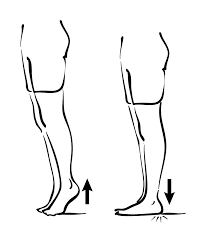
Stand holding on to the back of a chair. Slowly rise onto your tippy toes, and then lower back to a standing position. Repeat this 20 times. There are a variety of ways to boost the intensity of this exercise; perform exercise with light weights, do exercise with only one leg, or carry out the exercise on a staircase with your heels hanging off the edge.
3. SQE (Static Quadriceps Exercise):
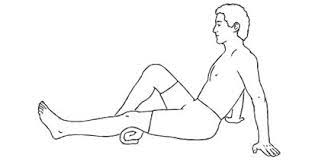
Sit on the floor with your legs straight out in front of you. While keeping your toes pulled back towards you, tighten your thigh muscles. Hold for 5-10 seconds and then relax.
4. Short-Arc Knee Extensions:
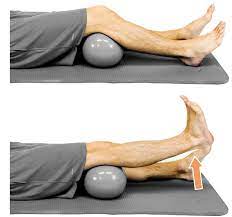
Lie on your back and bend your healthy knee. Place a pillow under your affected knee (place a weight on or around your foot or ankle for more resistance). Tighten your thigh muscles and lift your heel off the ground without lifting your knee off the pillow. Keep your knee straight and hold for 5-10 seconds. Slowly lower your foot to the floor.
5. Side-lying Hip Abduction:

Lay on your side and bend your bottom knee to give you better balance. Support your head with a pillow or towel roll. Straighten the top knee by tightening the muscles on the top of your thigh. Flex your foot so your toes face forward, lift your leg up toward the ceiling, lifting no higher than the line of your body. Pause, then slowly lower your leg back down to the start position. Do 10 repetitions of this exercise on each leg, 3 sets once per day. Perform this exercise 2-3 days per week.
6. Straight Leg Raise exercise (SLR):

Supine position on your back and support your neck with a pillow or neck roll. Bend 1 knee up so your foot is flat and your back is in a neutral position (not arched). Keep your arms lying straight and in line with your shoulders. Straighten the other leg by tightening the muscles on the top of your thigh. Keeping your toes pointed up, lift your leg up to the height of the bent knee. Pause, then slowly lower your leg back down to the start position. Do 10 repetitions of this exercise on each leg, 3 sets once per day. Perform this exercise 2-3 days per week.
FAQ
Hyperuricemia is the underlying disorder that leads to gout. This is the result of the body having too much uric acid. Purines, which are present in both your body and the food you eat, are broken down by the body to produce uric acid.
Treatments for gout are:
Gout attacks are often managed with non-steroidal anti-inflammatory drugs (NSAIDs), such as ibuprofen. You can receive an injection or pills containing steroids if the pain and swelling do not go down.
There are four stages in which gout develops: acute gouty arthritis, intercritical gout (a condition in which acute episodes occur in between), chronic tophaceous gout, and asymptomatic hyperuricemia.
The ten most common foods and beverages that cause gout are:
Sugar-filled beverages and sweets.
High fructose corn syrup.
Drinking alcohol.
Organ meat.
Game meats
Some seafood, such as haddock, codfish, tuna.
Red meats, such as bacon
Turkey.

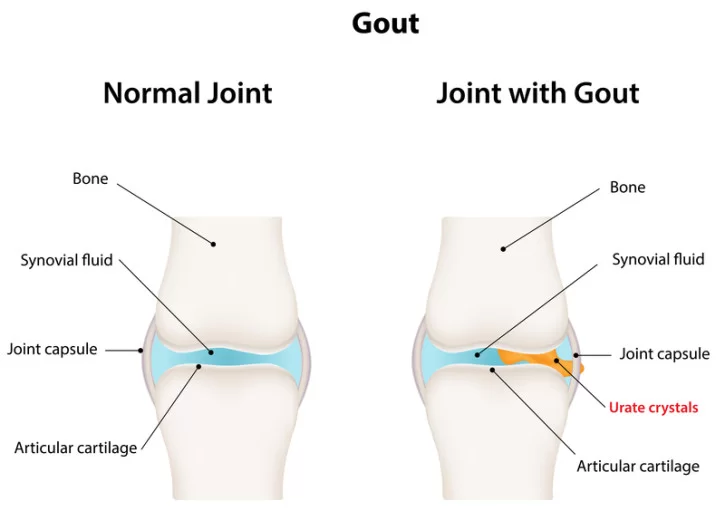
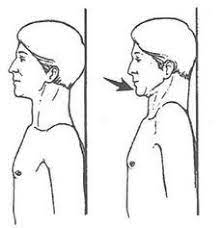
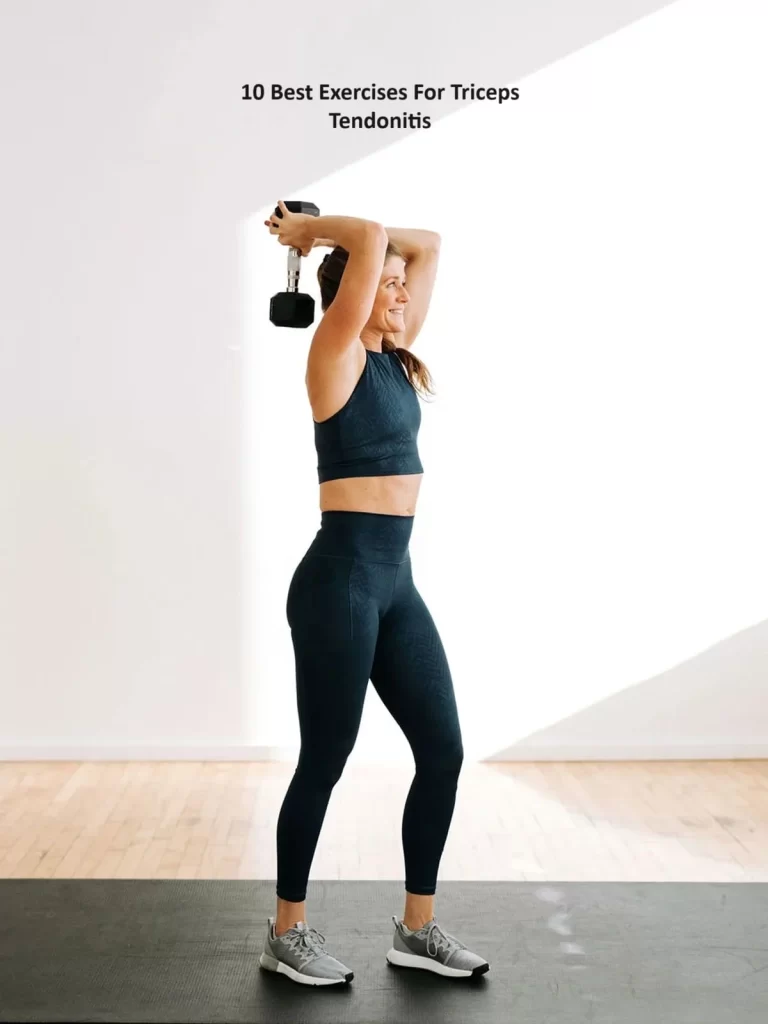
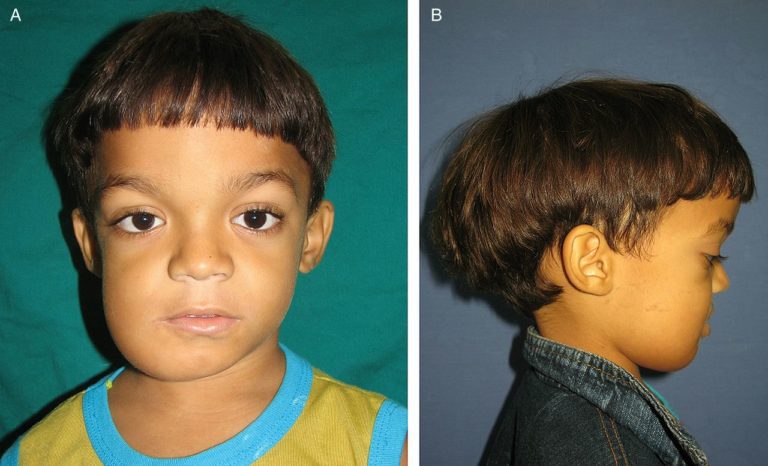
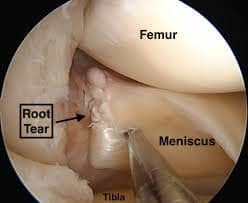
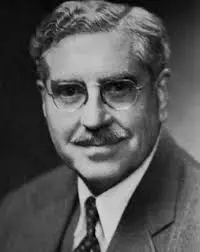

please i need a good treatment for arthritis